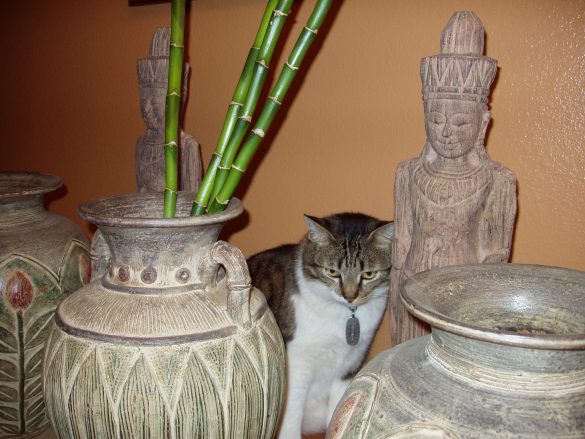As any cat owner knows, hairballs are an inevitable part of feline life. These unsightly clumps of fur can be a nuisance for both cats and their owners, causing discomfort and even health issues if left unchecked. But what exactly are hairballs, and how can we prevent them? In this article, we’ll delve into the science behind hairballs and provide practical tips for keeping your cat healthy and hairball-free. So grab a cup of tea, settle in with your furry friend, and let’s unravel the mystery of hairballs.
1. The Hairy Truth: Understanding the Science Behind Hairballs in Cats
Hairballs are a common occurrence in cats, and while they may seem like a harmless inconvenience, they can actually be quite dangerous. Understanding the science behind hairballs can help you take the necessary steps to prevent them from occurring in the first place.
When a cat grooms itself, it ingests a significant amount of hair. This hair can accumulate in the stomach and form a hairball. While small hairballs can usually be passed without issue, larger ones can cause serious problems. They can block the digestive tract, leading to vomiting, constipation, and even intestinal blockages. To prevent hairballs, it’s important to brush your cat regularly to remove loose hair and feed them a diet that is high in fiber. Additionally, there are a variety of hairball remedies available, such as special foods and supplements, that can help your cat pass hairballs more easily. By taking these steps, you can help keep your cat healthy and happy.
2. From Grooming to Diet: Proven Strategies for Preventing Hairballs in Your Feline Friend
As a cat owner, you know that hairballs are an inevitable part of your feline friend’s life. However, there are several proven strategies that you can implement to prevent hairballs and keep your cat healthy and happy.
- Grooming: Regular grooming is essential to prevent hairballs. Brushing your cat’s coat daily will help remove loose hair and prevent it from being ingested. You can also use a specialized hairball prevention cat shampoo to help reduce shedding and prevent hairballs.
- Diet: Your cat’s diet plays a crucial role in preventing hairballs. Feeding your cat a high-fiber diet can help move hair through the digestive system and prevent it from forming into hairballs. Additionally, adding a hairball control cat food to your cat’s diet can help reduce the formation of hairballs.
By implementing these proven strategies, you can help prevent hairballs in your feline friend and keep them healthy and happy. Remember to always consult with your veterinarian before making any changes to your cat’s diet or grooming routine.
3. The Ultimate Guide to Managing Hairballs: Expert Advice and Practical Tips for Cat Owners
Managing hairballs is a common concern for cat owners. Hairballs are formed when cats groom themselves and swallow their fur, which then accumulates in their stomach and forms a ball. While hairballs are generally harmless, they can cause discomfort and even lead to serious health issues in some cases. Here are some expert tips and practical advice to help you manage hairballs in your feline friend.
– Brush your cat regularly: Regular brushing helps to remove loose fur from your cat’s coat, reducing the amount of hair they ingest while grooming themselves. Use a soft-bristled brush or a grooming glove to gently brush your cat’s fur in the direction of hair growth. Be sure to pay extra attention to areas where your cat is prone to matting, such as behind the ears and under the legs.
– Feed your cat a hairball control diet: Many cat foods are specially formulated to help prevent hairballs. These diets contain a blend of fiber and other ingredients that help to move hair through your cat’s digestive system. Look for cat food that is labeled as “hairball control” or “hairball formula.” You can also add a hairball control supplement to your cat’s regular food.
– Provide your cat with plenty of water: Adequate hydration is essential for preventing hairballs. Make sure your cat always has access to fresh, clean water. You can also add water to your cat’s food or offer wet food to help increase their water intake.
– Use a hairball remedy: If your cat is prone to hairballs, you may want to consider using a hairball remedy. These products come in a variety of forms, including treats, pastes, and gels. They work by lubricating your cat’s digestive system, making it easier for hair to pass through. Be sure to follow the instructions carefully and only use hairball remedies that are specifically formulated for cats.
– Monitor your cat’s behavior: If your cat is vomiting frequently or seems to be in discomfort, it’s important to seek veterinary care. While hairballs are generally harmless, they can sometimes cause blockages in the digestive system, which can be life-threatening. If you notice any changes in your cat’s behavior or health, don’t hesitate to contact your veterinarian. In conclusion, understanding the mystery of hairballs is essential for any cat owner. By following these simple cat care tips, you can help your feline friend avoid uncomfortable hairballs and keep them healthy and happy. Remember to groom your cat regularly, provide them with a healthy diet, and monitor their behavior for any signs of distress. With a little extra care and attention, you can ensure that your cat remains a happy and healthy member of your family for years to come.

